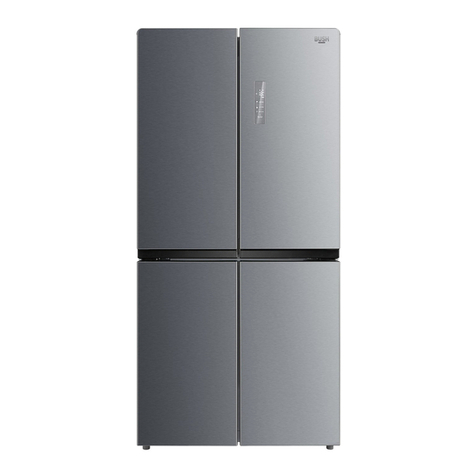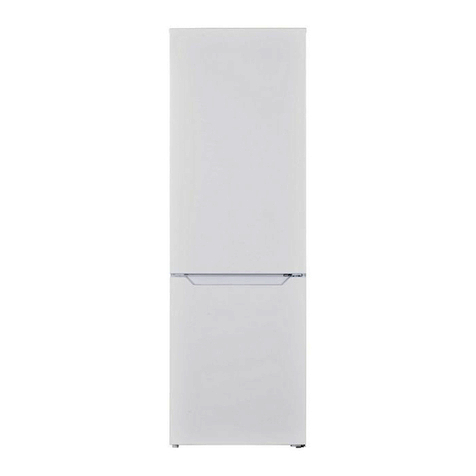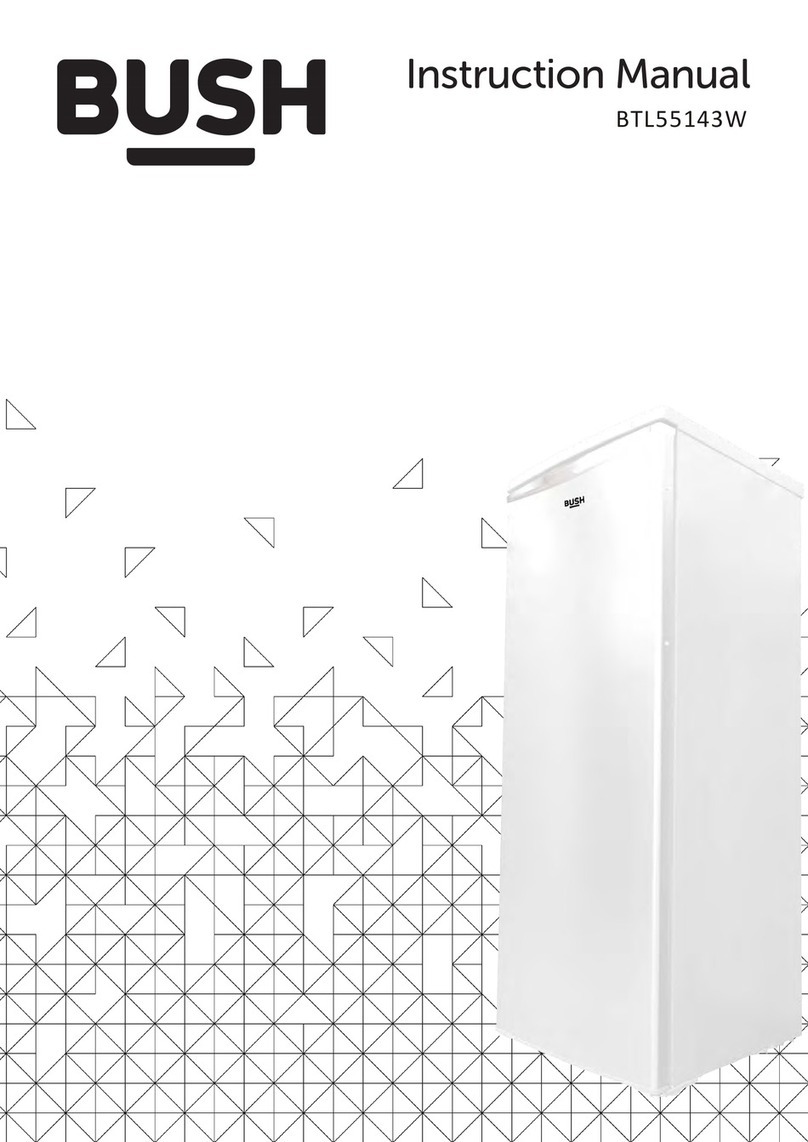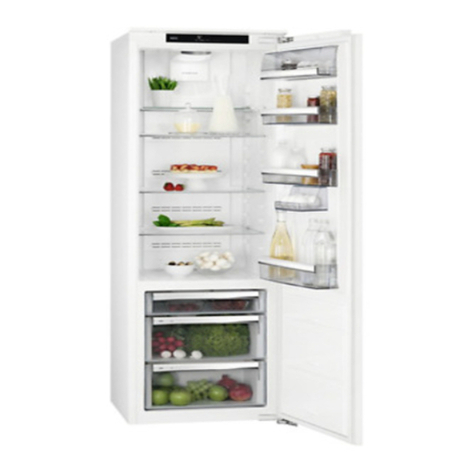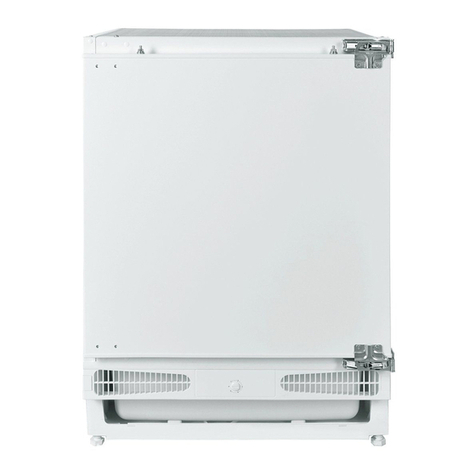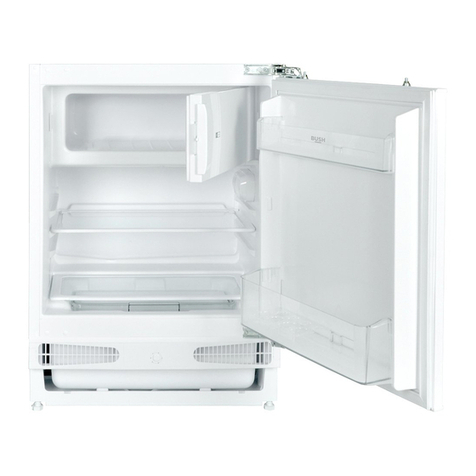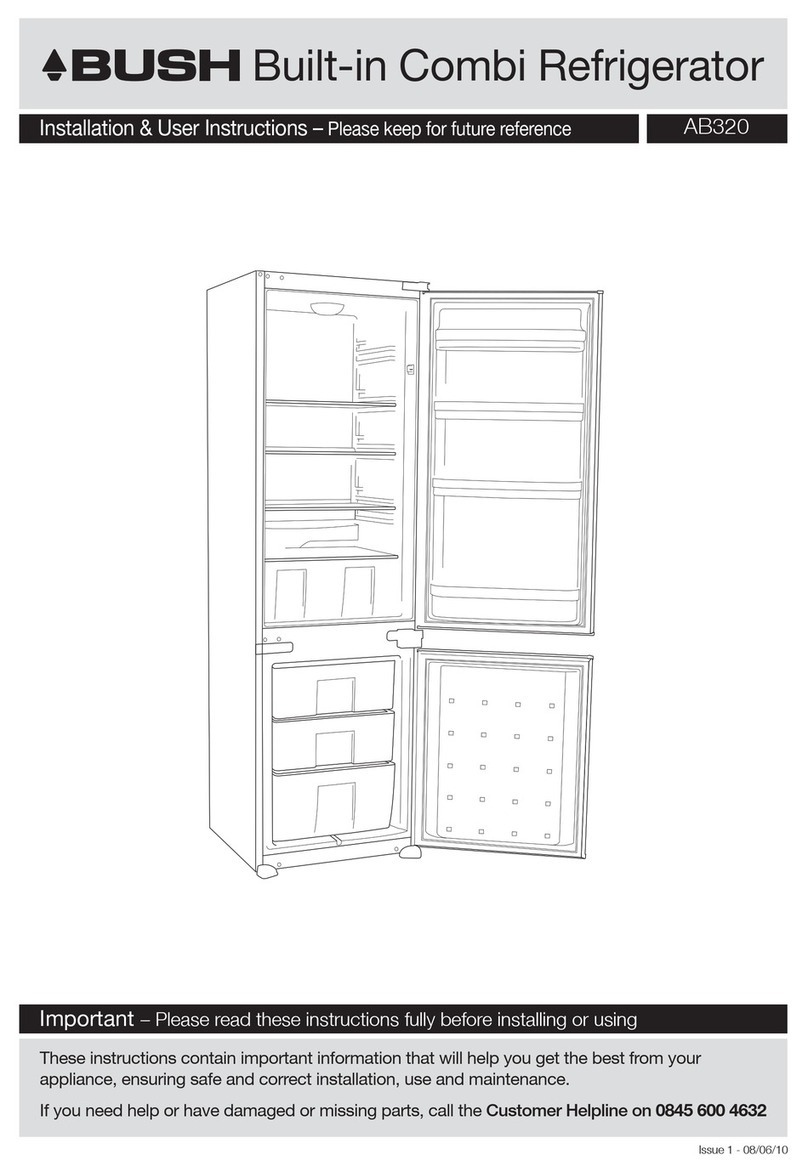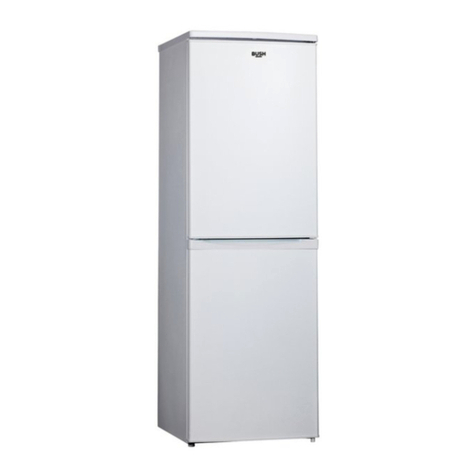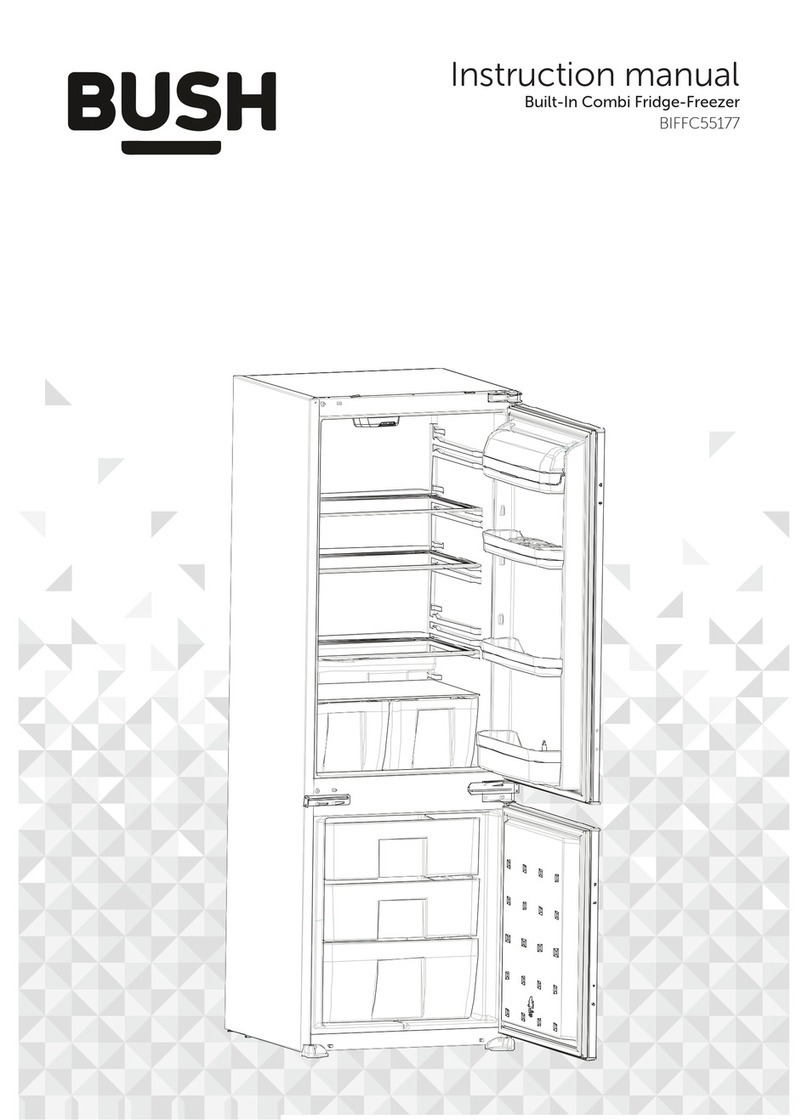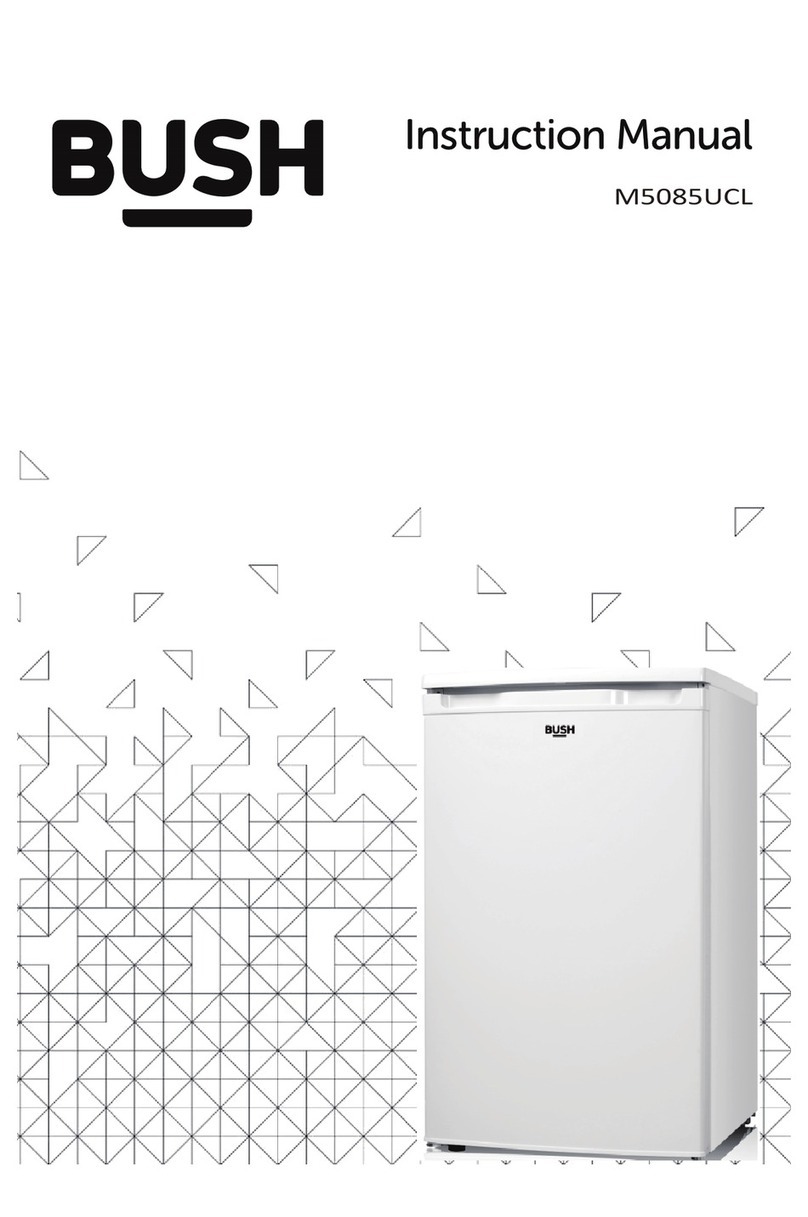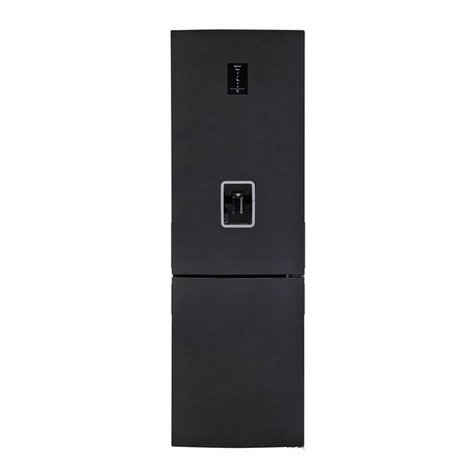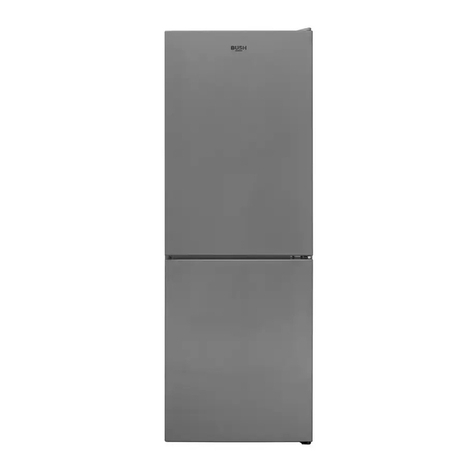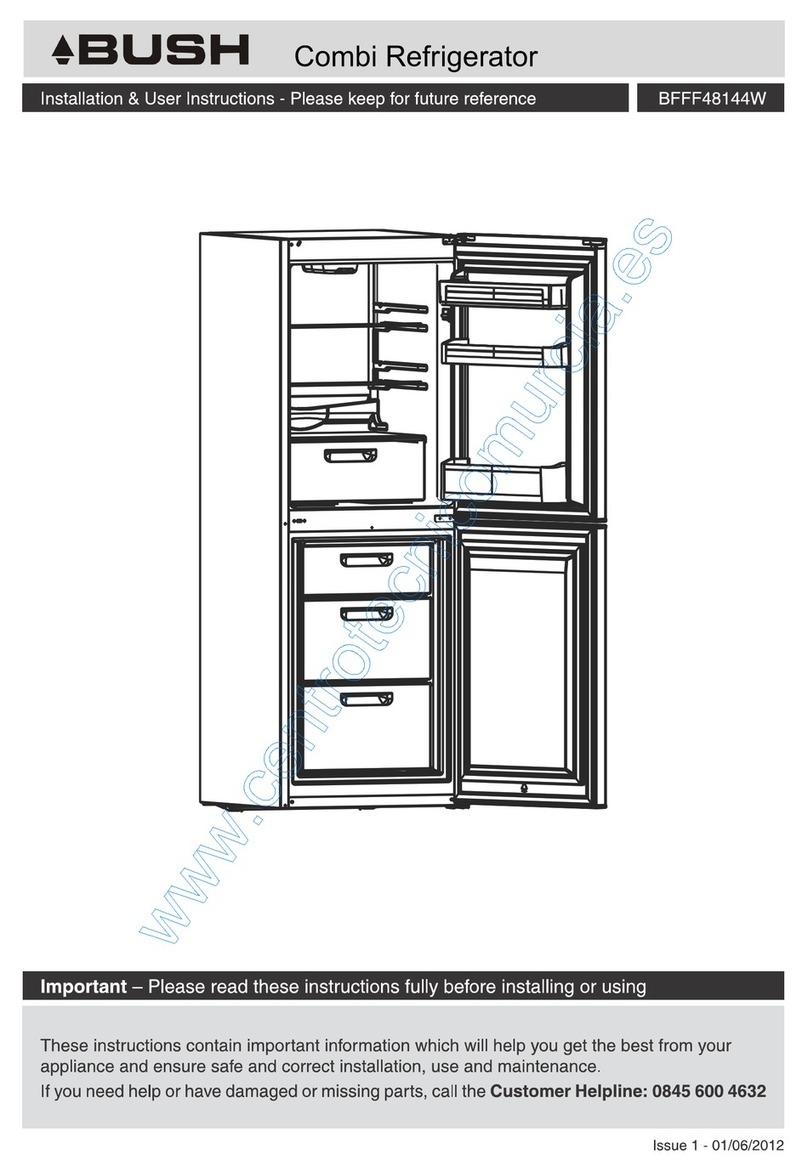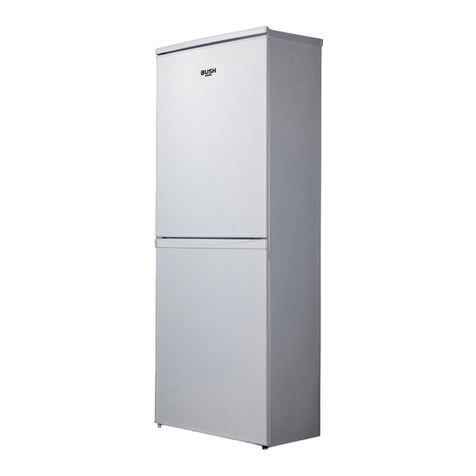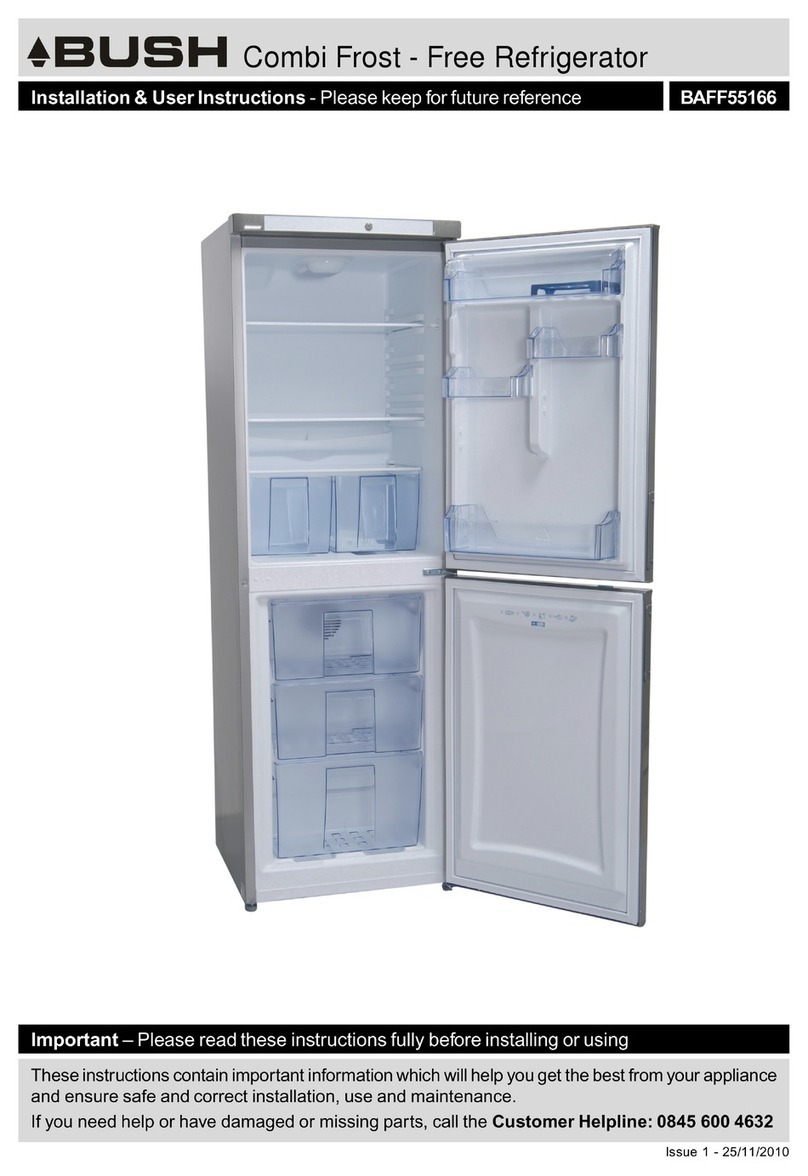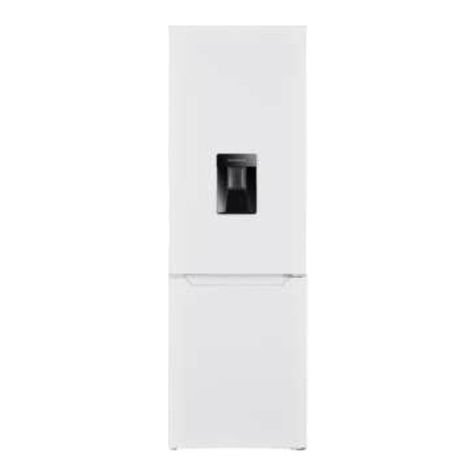
If you require any technical guidance or find that your product is not operating as intended, a simple solution can often be found in the Troubleshooting section of these instructions.
6
Safety information
Important - Please read these instructions fully before installing or
operating
Safety Instructions
General Safety Warnings
Read this user manual carefully.
WARNING: Keep ventilation openings,
in the appliance enclosure or in the built-in
structure, clear of obstruction.
WARNING: Do not use mechanical
devices or other means to accelerate the
defrosting process, other than those
recommended by the manufacturer.
WARNING: Do not use electrical
appliances inside the food storage
compartments of the appliance, unless
they are of the type recommended by the
manufacturer.
WARNING: Do not damage the
refrigerant circuit.
WARNING: When positioning the
appliance, ensure the supply cord is not
trapped or
damaged.
WARNING: Do not locate multiple
portable socket-outlets or portable power
supplies at the
rear of the appliance.
WARNING: In order to avoid any
hazards resulting from the instability of the
appliance, it must be fixed in accordance
with the following instructions:
If your appliance uses R600a as a
refrigerant (this information will be
provided on the label of the cooler) you
should take care during transportation and
installation to prevent the cooler elements
from being damaged. R600a is an
environmentally friendly and natural gas,
but it is explosive. In the event of a leak due
to damage of the cooler elements, move
your fridge away from open flames or heat
sources and ventilate the room where the
appliance is located for a few minutes.
•While carrying and positioning the
fridge, do not damage the cooler gas
circuit.
•Do not store explosive substances
such as aerosol cans with a flammable
propellant in this appliance.
•This appliance is intended to be
used in household and domestic
applications such as:
-staff kitchen areas in shops, offices
and other working environments.
-farm houses and by clients in hotels,
motels and other residential type
environments.
-bed and breakfast type
environments;
-catering and similar non-retail
applications.
•If the socket does not match the
refrigerator plug, it must be replaced
by the manufacturer, a service agent or
similarly qualified persons in order to
avoid a hazard.
•A specially grounded plug has been
connected to the power cable of your
refrigerator. This plug should be used
with a specially grounded socket of 13
amperes. If there is no such socket in
your house, please have one installed
by an authorised electrician.
Safety information


